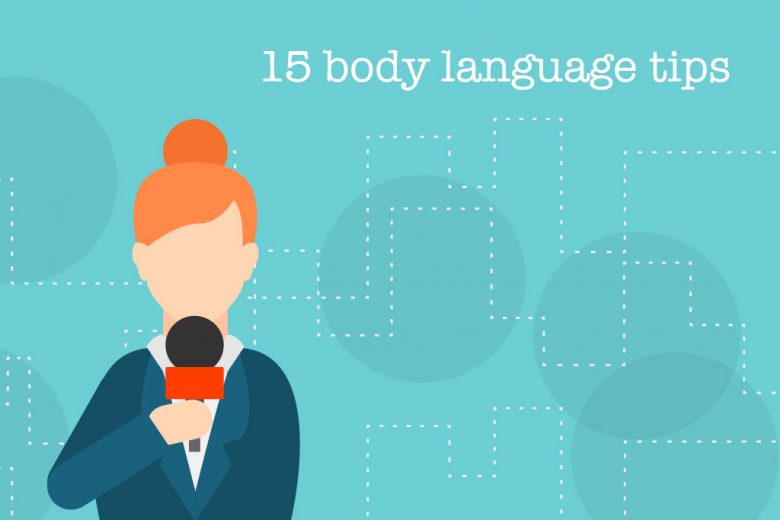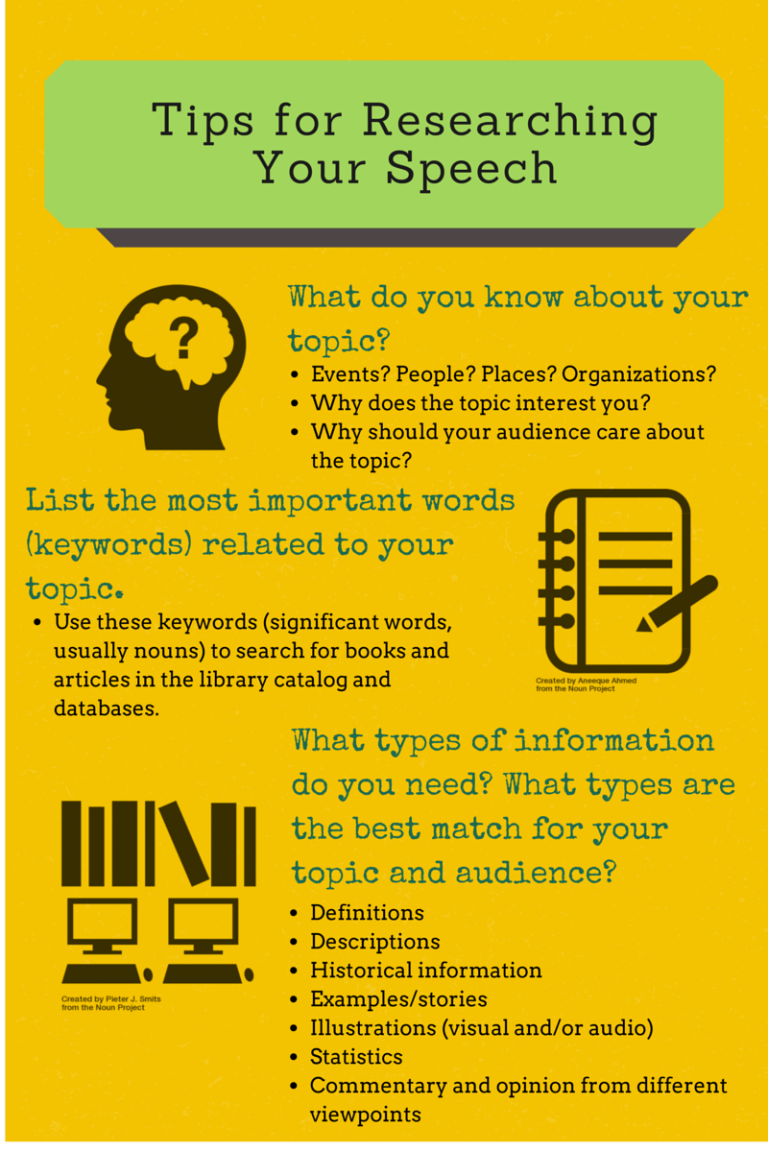Importance of Body Language in Public Speaking
Body language is extremely important in public speaking as it enhances communication, builds credibility, and engages the audience. When a speaker effectively uses body language, they can convey confidence, authority, and enthusiasm, which can captivate the audience and make the message more impactful.
Body language includes gestures, facial expressions, posture, and eye contact, all of which play a crucial role in delivering a successful speech. By being mindful of their body movements and expressions, speakers can establish a connection with the audience, convey sincerity, and effectively convey their message.
Overall, mastering body language is essential for effective public speaking and ensuring that the speaker’s message is well-received by the audience.
The Role Of Body Language In Public Speaking
Body language plays a crucial role in public speaking, as it helps convey confidence, credibility, and engagement. Effective gestures, posture, and eye contact can significantly enhance the speaker’s message and connection with the audience. Mastering body language is essential for delivering a powerful and persuasive speech.
Nonverbal communication in public speaking:
- Body language plays a vital role in conveying messages effectively during public speaking.
- It includes facial expressions, hand gestures, posture, and body movements.
- These nonverbal cues can enhance or detract from the speaker’s message.
- By integrating appropriate body language, speakers can captivate their audience and make their message more memorable.
Impact of body language on audience perception:
- Body language has a significant impact on how the audience perceives the speaker.
- It can convey confidence, credibility, and authority, making the audience more likely to trust the speaker’s message.
- Conversely, poor body language, such as fidgeting or avoiding eye contact, can create a perception of nervousness or dishonesty.
- The audience’s interpretation of body language also influences their level of engagement and receptiveness to the speaker’s ideas.
Importance of establishing rapport through body language:
- Establishing rapport with the audience is crucial for effective public speaking.
- Body language can help create a connection between the speaker and the audience.
- A warm and welcoming posture, maintaining eye contact, and using open gestures can make the audience feel comfortable and engaged.
- Mirroring the audience’s body language can also build rapport, as it creates a sense of familiarity and unity.
- By using positive and confident body language, speakers can build trust, credibility, and establish a strong connection with their audience.
Remember, mastering body language in public speaking can elevate your delivery and impact. Harness the power of nonverbal cues to engage your audience, shape their perception, and establish a rapport that leaves a lasting impression.
Key Elements Of Effective Body Language
Effective body language is crucial in public speaking. Key elements include maintaining eye contact, using gestures to emphasize points, and having a confident posture. These non-verbal cues help speakers connect with their audience and convey their message effectively.
Posture And Stance For Confident Delivery:
Maintaining the right posture and stance is crucial for delivering a confident and engaging public speech. Here are some key elements to consider:
- Stand tall: Ensure you stand upright with your shoulders back and your head held high. This posture exudes confidence and commands attention from the audience.
- Body alignment: Align your body with the audience, facing them directly. This shows that you are focused and connected with them.
- Balanced weight distribution: Distribute your weight evenly on both feet, keeping them slightly apart. This helps you stay stable and grounded throughout your speech.
- Avoid fidgeting: Refrain from any unnecessary movements like pacing, swaying, or constantly shifting your weight. Such movements can distract the audience and weaken your delivery.
- Use natural hand gestures: Employing purposeful and natural hand movements can help emphasize your points and make your speech more engaging. Avoid overly exaggerated or distracting gestures.
Gestures That Enhance The Message:
Using appropriate gestures can greatly enhance the message you are conveying during public speaking. Consider the following elements:
- Open palms: Displaying open palms signifies openness, honesty, and sincerity. Use them to express your trustworthiness and to connect with the audience.
- Appropriate gestures: Incorporate gestures that are relevant to your content and add emphasis to your words. For example, pointing to key ideas or outlining shapes in the air.
- Controlled movements: Ensure your gestures are deliberate and controlled. Avoid flailing or random movements that may detract from your message.
- Facial expressions: Accompany your gestures with appropriate facial expressions that reinforce your emotions and convey your message effectively.
Eye Contact To Engage The Audience:
Maintaining proper eye contact is a powerful tool for engaging the audience and building rapport. Consider these factors:
- Scanning the audience: Regularly scan the entire audience, making eye contact with different individuals. This creates a sense of inclusion and helps the audience feel personally connected to your speech.
- Duration of eye contact: Maintain eye contact with individuals for a few seconds before moving on to someone else. This shows attentiveness and ensures everyone feels involved.
- Variation in eye contact: Vary the intensity and duration of your eye contact based on the message you want to convey. Longer eye contact can underscore important points, while shorter glances can signal transitional moments.
- Personable approach: Avoid fixating only on one section or person in the audience. Instead, distribute your eye contact evenly, making everyone feel engaged and valued.
Remember, effective body language goes hand in hand with spoken words, as it helps convey confidence, credibility, and connection to the audience. With a strong and poised posture, purposeful gestures, and engaging eye contact, your public speaking skills are sure to shine.
Body Language Do’S And Don’Ts For Public Speaking
In public speaking, body language plays a crucial role in conveying confidence and credibility. It is important to maintain good posture, use appropriate hand gestures, make eye contact with the audience, and avoid nervous movements or fidgeting. By mastering these body language do’s and avoiding the don’ts, you can enhance your public speaking skills and effectively engage your audience.
Do’S For Effective Body Language On Stage:
- Using open and relaxed postures: Stand tall with your shoulders back and avoid crossing your arms or hunching over, as this can make you appear closed off and unapproachable.
- Using hand gestures to emphasize points: Utilize natural hand movements to enhance the delivery of your message and engage the audience. These gestures should be purposeful and in sync with your words.
- Maintaining eye contact with the audience: Establishing eye contact builds a connection with the audience, showing confidence and genuine interest. Scan the room, making brief eye contact with individuals.
Don’Ts To Avoid Negative Body Language:
- Crossing arms or legs, indicating defensiveness: Crossed arms or legs can make you seem guarded and closed off. Avoid these positions and instead adopt an open stance to appear more welcoming and receptive.
- Fidgeting or excessive movement, signifying nervousness: Excessive movement, such as pacing or fidgeting, can be distracting and convey nervousness. Aim to maintain a relaxed and composed posture to project confidence.
- Avoiding eye contact, indicating lack of confidence: Lack of eye contact can create a disengaged and untrustworthy impression. Make an effort to establish eye contact with different parts of the audience to connect effectively.
Incorporating positive body language is crucial for successful public speaking. By utilizing open and relaxed postures, emphasizing points with hand gestures, and maintaining eye contact, you can effectively convey your message and captivate your audience. Conversely, avoiding negative body language such as crossing arms or legs, excessive fidgeting, and lack of eye contact, helps create a more confident and engaging presence on stage.
Remember, your body language speaks volumes and can greatly impact how your message is received.
Improving Body Language Skills For Public Speaking
Improve your public speaking by honing your body language skills. Learn the significance of effective nonverbal communication for captivating your audience and conveying your message with confidence.
Public speaking can be a daunting task for many individuals, requiring not only effective verbal communication but also mastery of body language. The way we present ourselves non-verbally can have a significant impact on how our message is received by the audience.
To enhance your body language skills for public speaking, consider the following strategies:
Practicing And Rehearsing In Front Of A Mirror:
- Stand in front of a mirror and observe your body language as you deliver your speech.
- Pay attention to facial expressions, posture, gestures, and overall body movements.
- Practice maintaining eye contact with your reflection to simulate engaging with an audience.
- Adjust your body language to appear confident, poised, and approachable.
- Analyze and make necessary improvements to your delivery by refining your non-verbal cues.
Seeking Feedback From Trusted Friends Or Colleagues:
- Share your practice sessions with individuals who can provide honest and constructive feedback.
- Ask them to focus on your body language and non-verbal cues during your presentation.
- Inquire about any distracting or ineffective gestures, facial expressions, or posture.
- Take their suggestions seriously and make adjustments accordingly.
- Receiving feedback from trusted individuals can help you improve your body language skills significantly.
Taking Professional Public Speaking Courses Or Workshops:
- Enroll in courses or workshops that specifically address body language and non-verbal communication in public speaking.
- These programs offer expert guidance, techniques, and practical exercises to enhance your body language skills.
- Learn how to use gestures effectively to emphasize key points and convey confidence.
- Receive professional feedback from instructors to identify any areas that need improvement.
- The structured learning environment can provide valuable insights and techniques to enhance your body language in public speaking.
Improving your body language skills for public speaking is a continuous process that requires practice, feedback, and training. By incorporating these strategies into your preparation, you can enhance your non-verbal communication and make a more powerful impact on your audience.
Remember, mastering body language goes hand in hand with effective verbal communication, helping you become a more persuasive and engaging public speaker.
Case Studies: Impact Of Body Language On Public Speaking
Discover how body language influences public speaking success through engaging case studies. Learn the significance of non-verbal communication for effective presentations and captivating your audience. Uncover the practical impact of body language on public speaking, enhancing your speaking skills.
Public speaking is a skill that requires more than just the words coming out of your mouth. The way you present yourself physically can have a significant impact on how your message is received. Body language plays a crucial role in public speaking, allowing you to connect with your audience, convey confidence, and enhance the overall impact of your speech.
In this section, we will analyze influential public speakers and examine the role of body language in their success.
Analysis Of Influential Public Speakers And Their Body Language:
- Barack Obama:
His commanding presence and use of open body postures made him a captivating speaker. The way he used hand gestures to emphasize key points and maintain eye contact showed his confidence and authenticity.
- Oprah Winfrey:
Known for her ability to engage and inspire, Oprah’s warm, expressive smile played a significant role in connecting with her audience. Her use of encompassing gestures and her relaxed posture created a sense of openness and approachability.
- Steve Jobs:
The late Apple co-founder had a unique style of presenting. His minimalistic body movements and calculated gestures helped maintain the focus on his message. His ability to exude confidence and enthusiasm through his body language contributed to the success of his presentations.
Examining successful speeches and the role of body language in their impact:
- Martin Luther King Jr.’s “I Have a Dream” speech:
King’s powerful delivery was complemented by his passionate body language. His confident stance, powerful gestures, and direct eye contact conveyed his conviction and drew the audience into his message.
- Elizabeth Warren’s Address on Income Inequality:
Warren’s firm posture and hand gestures helped emphasize her key points. Her use of varied facial expressions and well-timed pauses added impact to her speech, showcasing her passion and connecting with the audience emotionally.
- Brene Brown’s TED Talk on Vulnerability:
Brown’s authentic body language, including open gestures and genuine facial expressions, reflected her vulnerability and made her message relatable. Her warm smile and maintained eye contact created a sense of trust and engagement with her audience.
Body language can make or break a public speaking performance. These case studies emphasize how influential public speakers effectively harness their body language to enhance their message. To become a confident and impactful speaker, paying attention to your own body language is crucial.
Remember, it’s not just about what you say, but how you say it.
Overcoming Challenges In Body Language
Discover how to overcome challenges in body language and enhance your public speaking skills. By understanding the importance of body language, you can effectively communicate with your audience and make a lasting impact.
Public speaking can be a nerve-wracking experience for many individuals, requiring not only verbal fluency but also effective body language. Overcoming challenges in body language is crucial to ensure effective communication and connect with your audience. By addressing stage fright and nervousness, employing techniques to manage anxiety and stress, and developing self-awareness and control of nonverbal cues, you can enhance your overall presentation skills.
Let’s delve into each of these aspects in detail:
Addressing Stage Fright And Nervousness:
- Visualize success: Imagine yourself delivering a successful presentation, engaging the audience, and receiving applause and appreciation.
- Deep breathing exercises: Practice slow, deep breaths to calm your nerves and reduce anxiety.
- Positive self-talk: Replace negative thoughts with positive affirmations to boost your confidence.
- Gradual exposure: Begin with smaller speaking opportunities to gradually build your confidence on larger stages.
- Seek support: Discuss your fears with a mentor, join public speaking groups, or seek professional help to overcome stage fright.
Techniques For Managing Anxiety And Stress:
- Physical activity: Engage in regular exercise to release endorphins and reduce stress levels.
- Mindfulness and meditation: Incorporate mindfulness practices into your routine to increase focus and reduce anxiety.
- Time management: Prioritize tasks and create a schedule to reduce last-minute stressors.
- Relaxation techniques: Practice deep breathing, progressive muscle relaxation, or listen to calming music before your presentation.
- Seek support: Surround yourself with a supportive network of friends and colleagues who can offer encouragement and feedback.
Developing Self-Awareness And Control Of Nonverbal Cues:
- Practicing in front of a mirror: Observe your body language, gestures, and facial expressions to make necessary adjustments.
- Posture and stance: Stand tall, with an open and relaxed posture to convey confidence and authority.
- Eye contact: Maintain eye contact with your audience to foster connection and engagement.
- Gestures and hand movements: Use purposeful and appropriate gestures to emphasize key points and maintain audience interest.
- Facial expressions: Convey enthusiasm and emotions through facial expressions that complement your verbal messages.
By addressing stage fright and nervousness, employing techniques for managing anxiety and stress, and developing self-awareness and control of nonverbal cues, you can enhance your body language and deliver impactful public speeches. With practice and persistence, you will be able to engage your audience effectively and leave a lasting impression.
So, embrace these challenges and rise above them to become a confident and influential public speaker.
Incorporating Body Language Into Presentations
Discover the power of incorporating body language into presentations and unlock the true potential of your public speaking skills. By understanding the importance of nonverbal cues, you can engage and captivate your audience effortlessly, leaving a lasting impression.
Using Body Language To Enhance Verbal Messages
- Body language plays a crucial role in public speaking as it can greatly enhance the impact of your verbal messages. By effectively incorporating body language into your presentations, you can capture your audience’s attention, convey your message more convincingly, and establish a strong connection with them. Here are some key ways to use body language to enhance your verbal messages:
- Maintain good posture: Stand tall and straight with your shoulders back. This posture exudes confidence and professionalism, making your audience more receptive to your message.
- Use hand gestures: Gestures can help emphasize key points, provide visual cues, and add emphasis to your words. Be natural and purposeful with your hand movements, avoiding excessive or distracting gestures.
- Facial expressions: Your expressions can convey emotions and engage your audience. Smile when appropriate, showing warmth and friendliness. Use your eyebrows and eyes to express surprise, concern, or excitement, reflecting the emotions you want to convey.
- Eye contact: Establishing eye contact with your audience builds trust and connection. Scan the room and make eye contact with individuals or sections of the audience, maintaining it for a few seconds before moving on.
- Body movement: Move around the stage or speaking area purposefully. Utilize the space to engage different parts of the audience and avoid staying rooted in one spot. However, ensure your movements are intentional and not aimless pacing.
Utilizing Effective Gestures And Movements For Different Speaking Scenarios
- Different speaking scenarios call for varying techniques in using gestures and movements to enhance your presentations. Here are some effective strategies to consider:
- Formal presentations: In formal settings such as business conferences or academic lectures, use controlled and refined gestures. Avoid excessive movements and focus on maintaining a steady and composed demeanor.
- Storytelling or engaging presentations: When telling a story or delivering a more engaging presentation, utilize expressive gestures and movements to enhance the narrative. Use your whole body to convey excitement, enthusiasm, or tension while syncing your movements with the flow of the story.
- Interactive sessions or workshops: In interactive sessions or workshops, encourage audience participation by using open and welcoming gestures, inviting questions and feedback. Incorporate movements that involve the audience, such as pointing towards the audience or engaging in group activities.
- Persuasive speeches: When delivering persuasive speeches, leverage gestures that project confidence, authority, and conviction. Use firm and deliberate gestures to emphasize crucial points, making your arguments more compelling.
Adapting Body Language To The Needs And Preferences Of Diverse Audiences
- Effective public speaking requires adapting body language to cater to diverse audiences with different needs and preferences. Consider the following guidelines:
- Cultural awareness: Be mindful of cultural differences in body language interpretations. Research and familiarize yourself with the cultural norms and gestures of your audience to avoid any unintended miscommunications or offenses.
- Flexibility in gestures: Understand that different audiences may respond differently to specific gestures or movements. Be flexible and adaptable, modifying your gestures to suit the preferences of each audience while maintaining authenticity.
- Tone and energy matching: Align your body language with the tone and energy of your audience. If they are more relaxed and informal, you can mirror their casual body language to establish rapport. On the other hand, in more formal settings, adopt a more composed and professional posture.
- Observing audience cues: Pay attention to how your body language affects your audience. Observe their reactions and adjust accordingly. If you notice disengagement or confusion, modify your gestures or movements to re-engage them.
By incorporating these strategies, you can make your presentations more effective and impactful, ensuring that your body language complements and enhances your verbal messages. Remember, practice and self-awareness are key to mastering body language in public speaking.

Credit: www.genardmethod.com
Frequently Asked Questions On Importance Of Body Language In Public Speaking
How Does Body Language Affect Public Speaking?
Body language plays a crucial role in public speaking as it conveys confidence, credibility, and engagement. It enhances the speaker’s message, captures the audience’s attention, and helps establish a connection. Effective body language includes maintaining eye contact, using gestures, and maintaining good posture, all of which add impact to the speaker’s delivery.
What Are The Signs Of Good Body Language In Public Speaking?
Good body language in public speaking is characterized by various signs such as making direct eye contact with the audience, standing with an upright posture, using natural and purposeful gestures, and having open and relaxed body movements. These signs demonstrate confidence, engagement, and authenticity, thereby enhancing the speaker’s overall impact.
How Can I Improve My Body Language In Public Speaking?
To improve your body language in public speaking, focus on maintaining good posture, practicing purposeful gestures, and being aware of your facial expressions. Use video recordings to analyze your body language and seek feedback from others. Additionally, engaging in activities like yoga or theater can help improve body awareness and control, enhancing your overall public speaking skills.
Conclusion
Body language plays a crucial role in public speaking, as it can significantly impact the effectiveness of your message. When you utilize positive body language, such as maintaining eye contact, using expressive gestures, and standing tall with good posture, you exude confidence and credibility to your audience.
This not only helps to establish trust and connection, but it also enhances your ability to effectively convey your ideas and engage your listeners. On the other hand, negative body language, such as crossing your arms, fidgeting, or avoiding eye contact, can create a barrier between you and your audience, hindering effective communication.
Therefore, it is important to be mindful of your body language when speaking in public and to continuously work on improving it. By mastering the art of body language, you can become a more effective and persuasive public speaker, leaving a lasting impression on your audience.
Remember, your body language speaks louder than your words. So, make sure that it is saying the right things.






